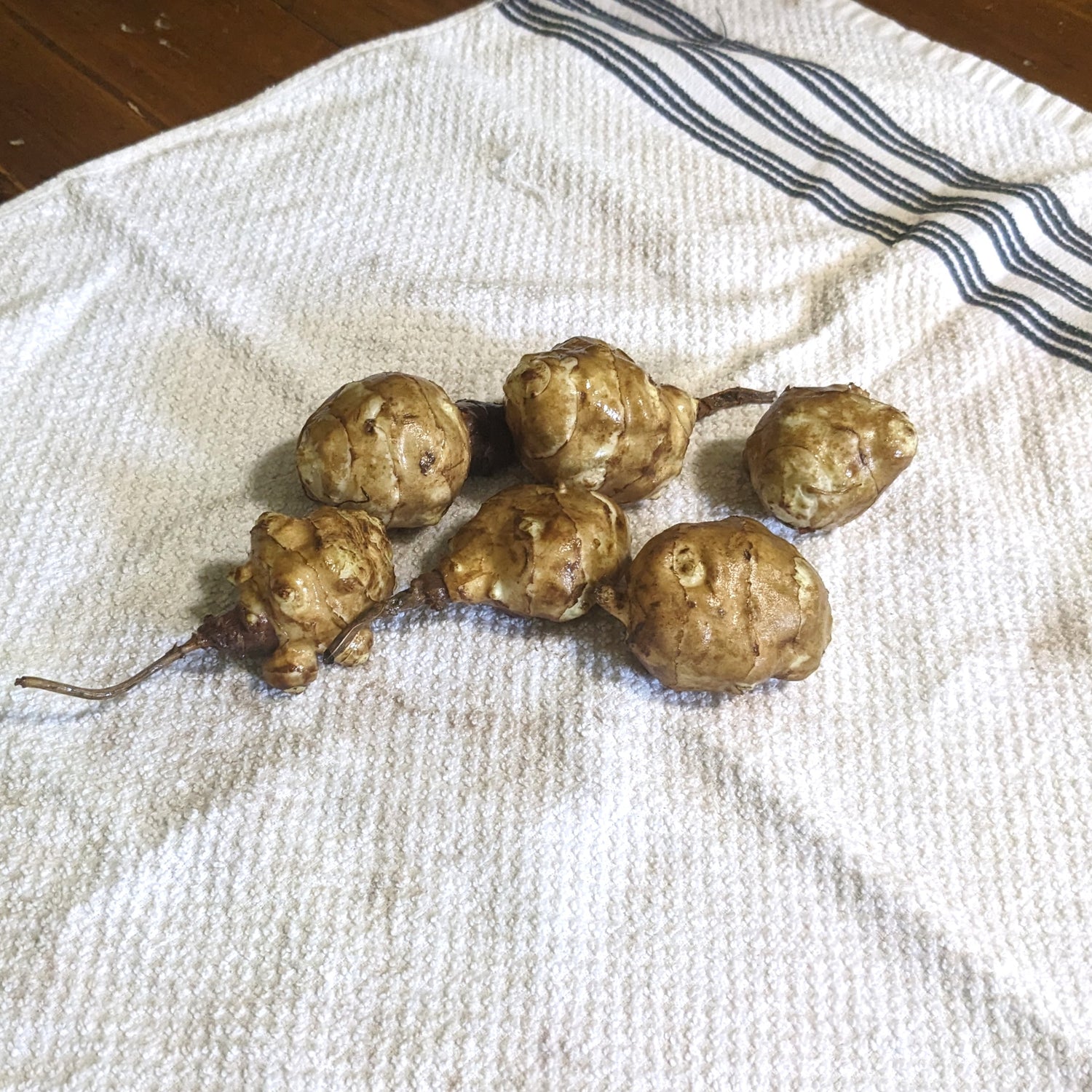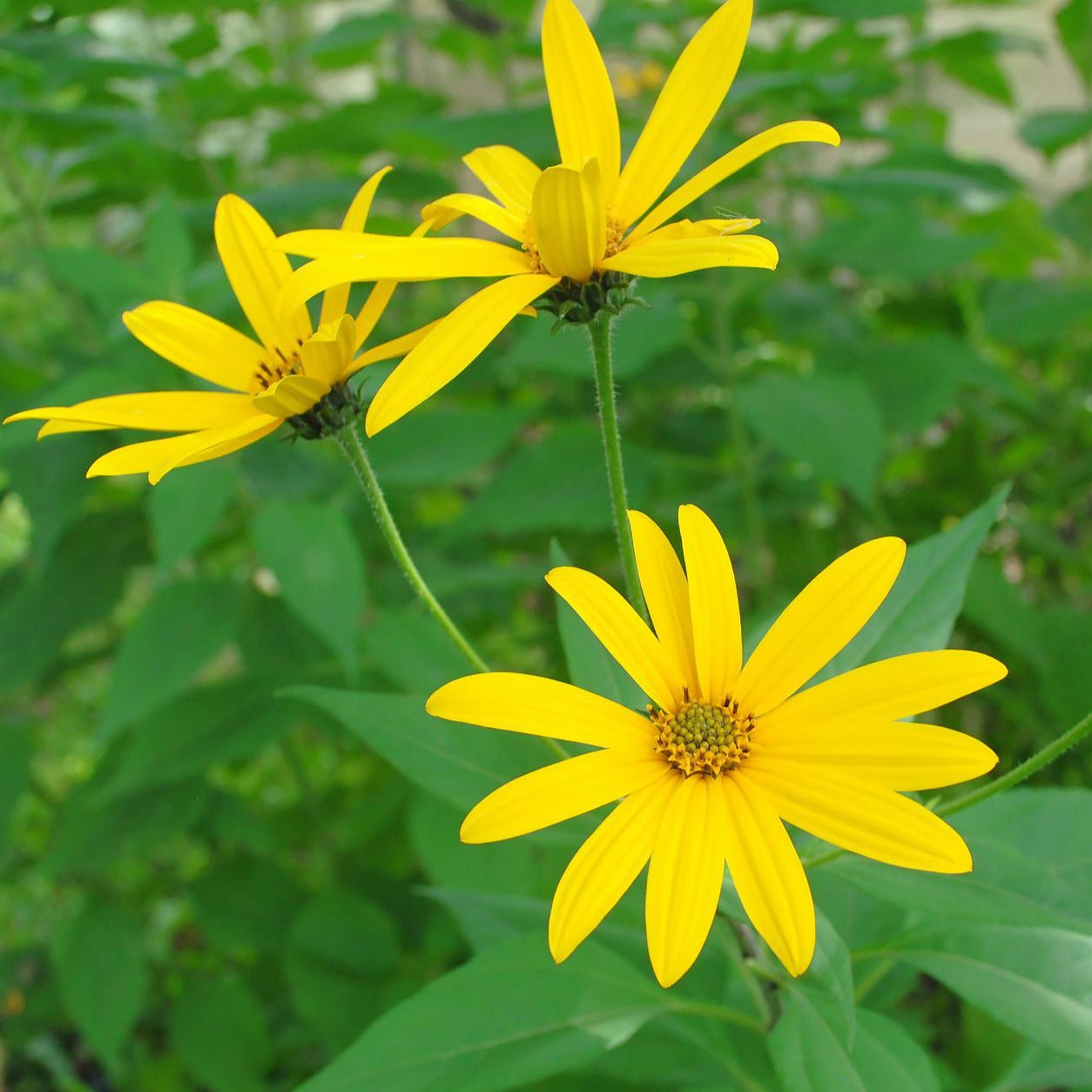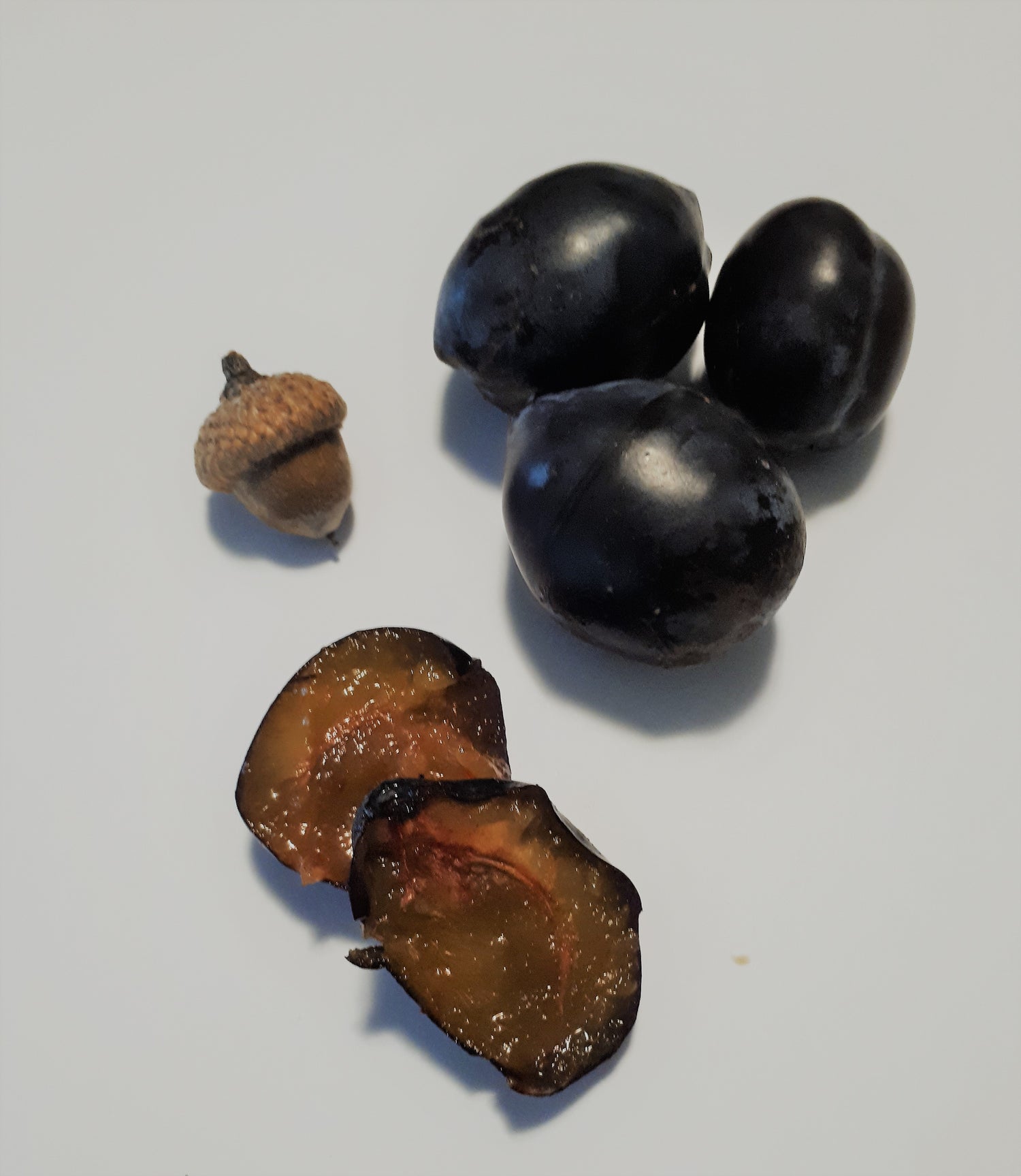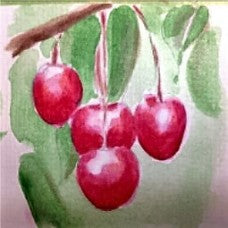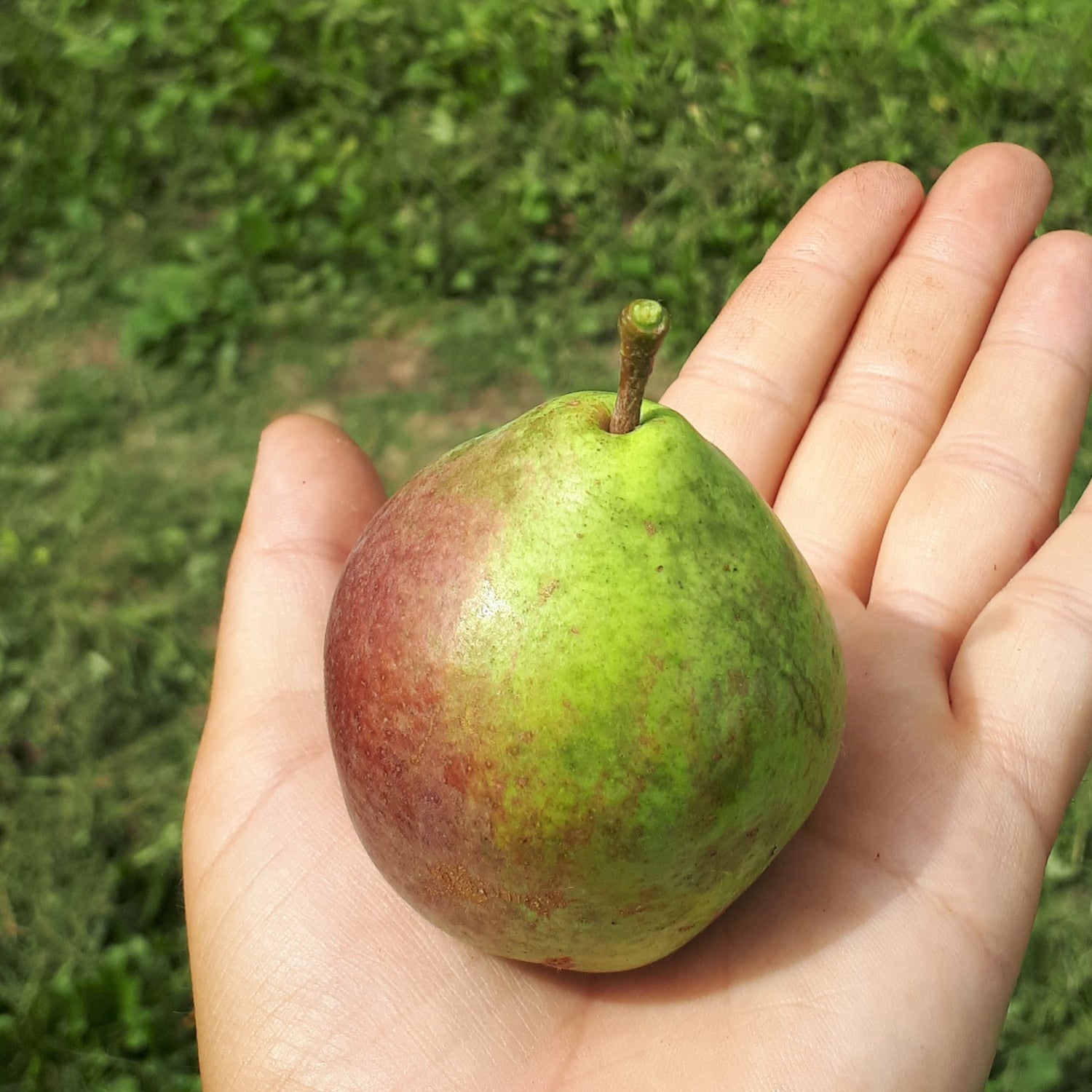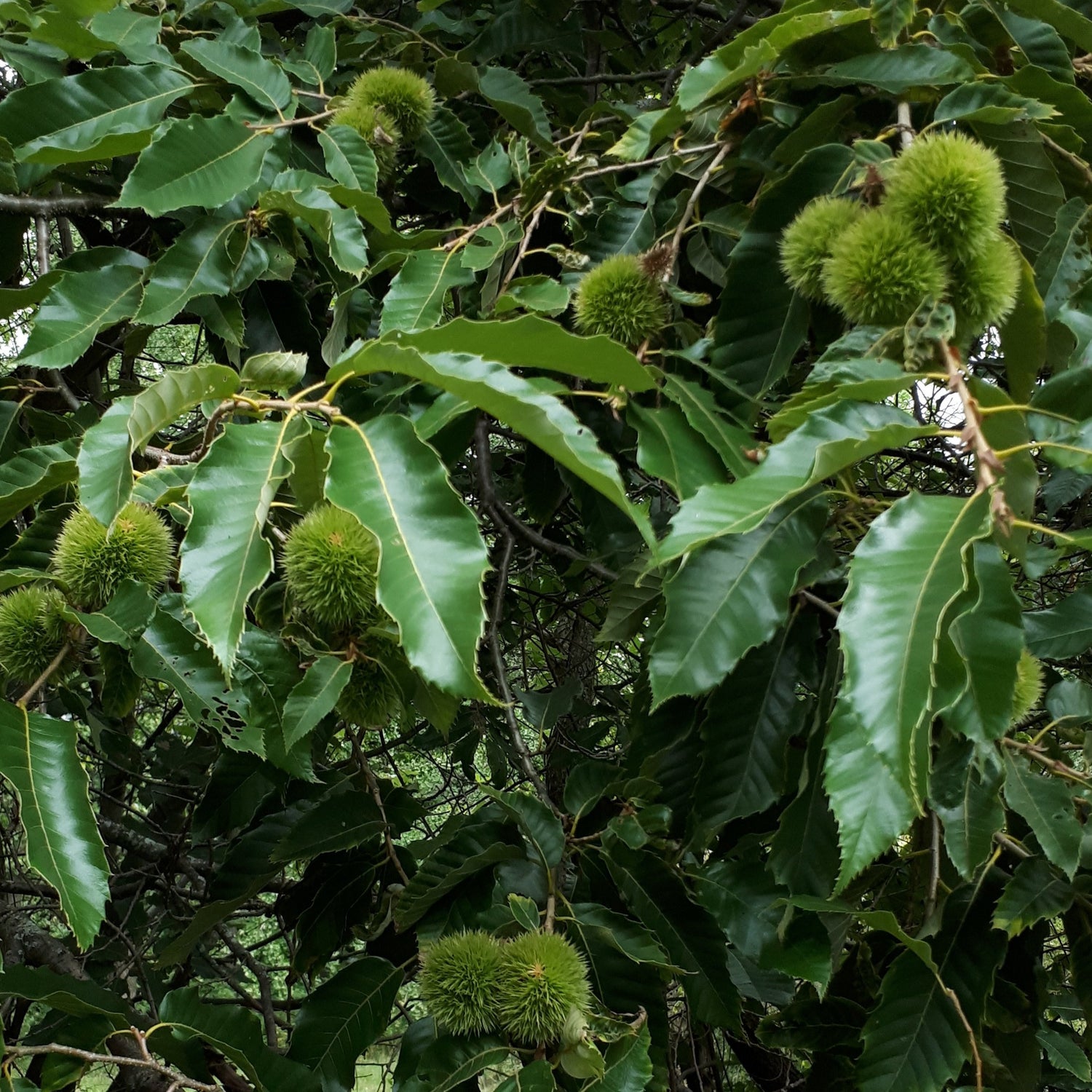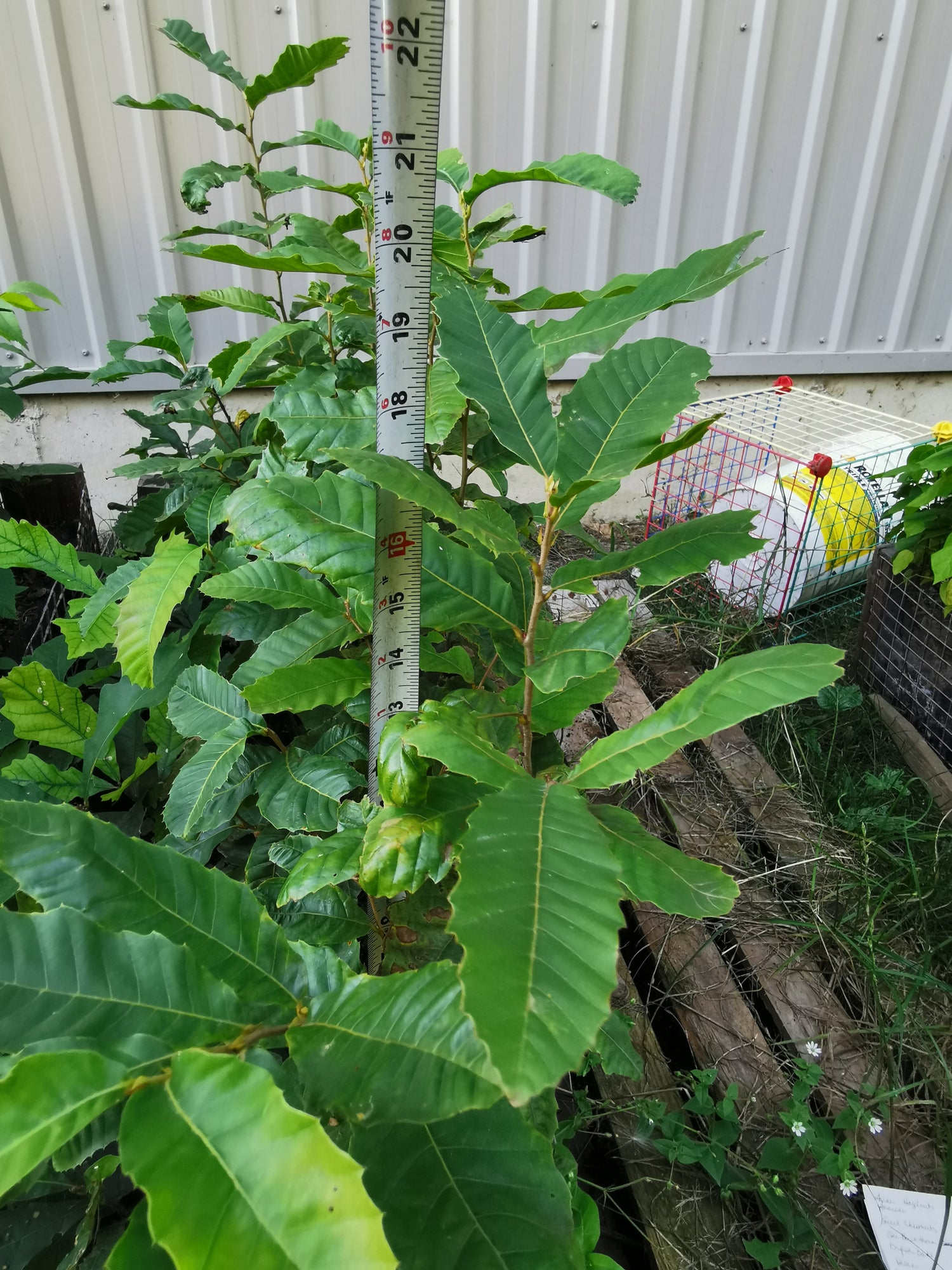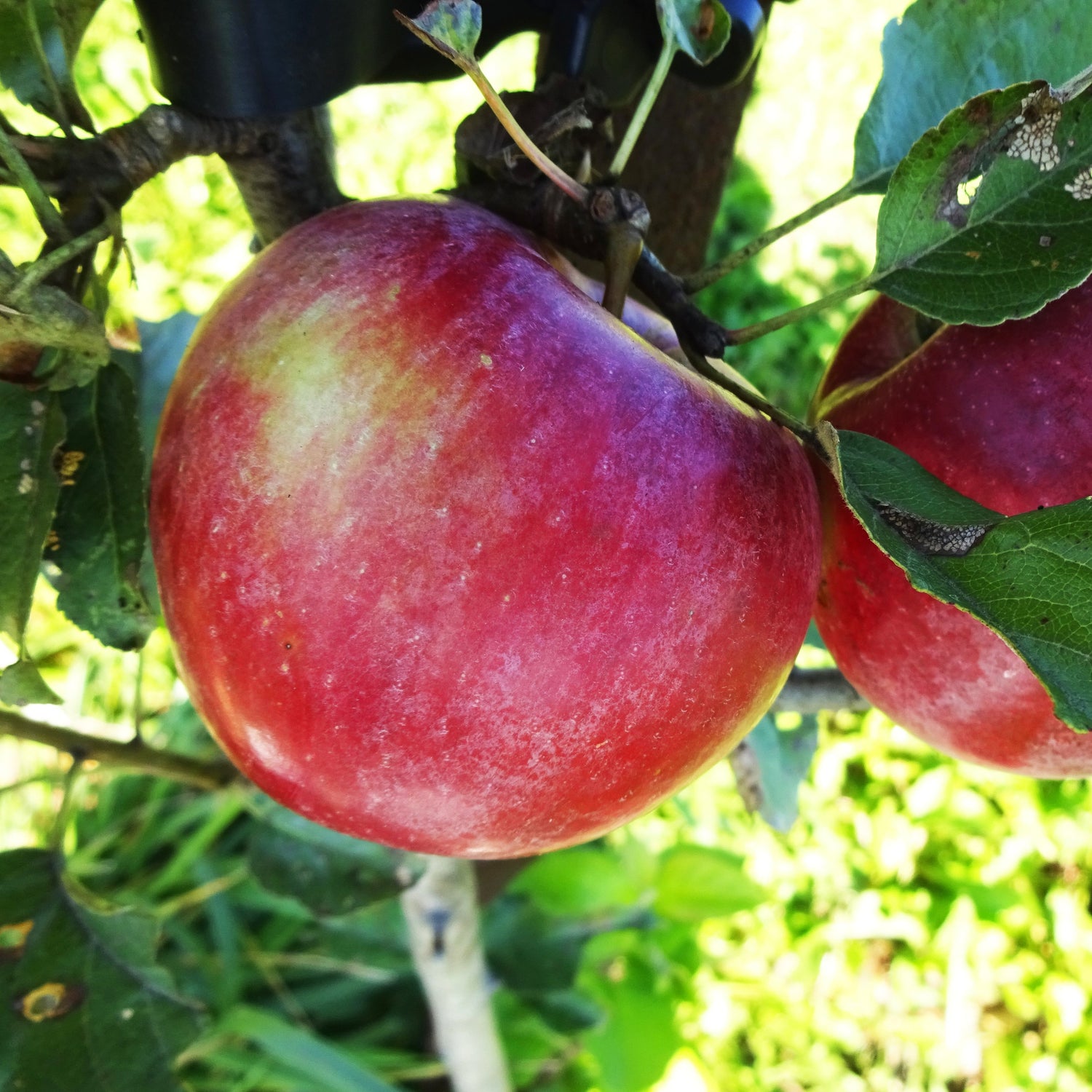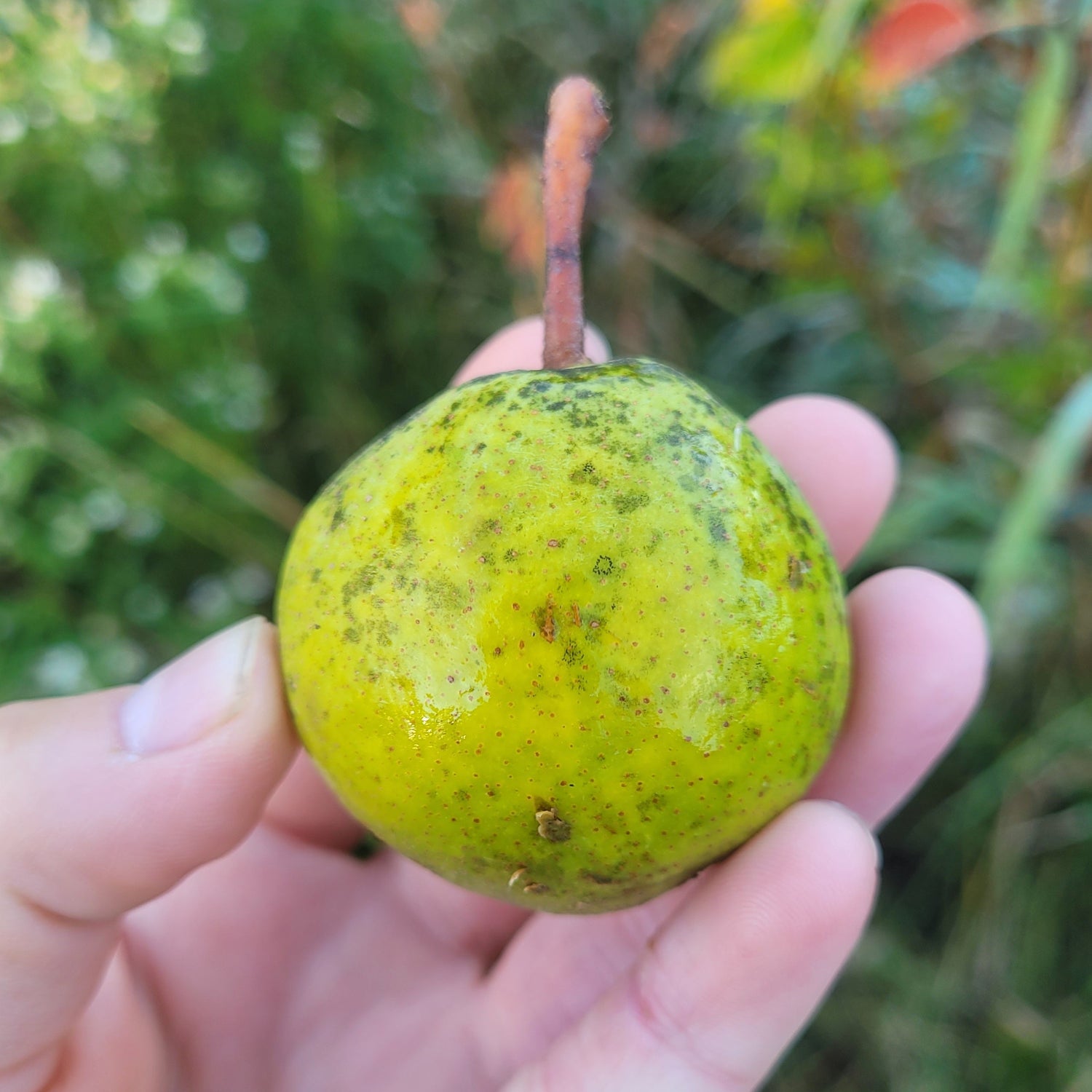Products
Sort by:
666 products
666 products
Species: Lindera benzoin
History: Spicebush is native to eastern North America, although in Canada it can only be found in Ontario. It has been used medicinally by several indigenous peoples and early land surveyors used it to find good agricultural land due to its propensity to grow in good soil. It remains a popular ornamental plant along with its uses for spices and teas. Spicebush is also the only host plant for the spicebush swallowtail.
Why We Grow It: If you want to source your own spices locally, try this aromatic, native shrub! The leaves and berries can be used as substitutes for cinnamon, nutmeg, and allspice. It is attractive to butterflies and the early bloom time means it is a good source of pollen in the spring. The shrub is also quite pretty in autumn when its leaves turn a bright yellow.
History: Spigold (aka Spy Gold) was developed at the New York Agricultural Experiment Station in Geneva, New York and released in 1962. It is a cross between Red Spy and Golden Delicious that has remained somewhat popular in North America.
Why We Grow It: Spigold marries the best qualities of Golden Delicious and Red Spy. It produces very large apples that are crisp and juicy with a honeyed sweet/tart flavour. These large apples are excellent for fresh eating, making applesauce, baking into pies, and making into cider. They also store quite well and some say the flavour actually improves in storage.
Use these spiral guards to keep mice, rabbits, and other critters from girdling your tree. 24 inches high.
We are pleased to offer two options for spiral guards:
- White plastic guards - The white colour helps to avoid damage from the sun and trapping excessive heat around the base of your tree.
- Green biodegradable guards - The biodegradable guards are made of starch based plastic and rated for 2 years, which is nearly as long as the plastic spirals last.
Both types of guards will get brittle after a few years and begin cracking/disintegrating. With the green biodegradable guards, there is no plastic waste to reclaim from your orchard once they begin breaking down.
History: The St. Lawrence apple was discovered in the Montreal area as a seedling of a Snow apple, the most popular variety in Quebec at the time. By 1835, these apples were commonly grown in the area where they were popular for fresh eating and cooking but have since faded into obscurity.
Why We Grow It: Although less popular now, these apples are still good for eating and baking. The boldly striped red skin also makes the fruit very attractive. The tree bears good crops each year and is relatively hardy.
History: The St. Lawrence apple was discovered in the Montreal area as a seedling of a Snow apple, the most popular variety in Quebec at the time. By 1835, these apples were commonly grown in the area where they were popular for fresh eating and cooking but have since faded into obscurity.
Why We Grow It: Although less popular now, these apples are still good for eating and baking. The boldly striped red skin also makes the fruit very attractive. The tree bears good crops each year and is relatively hardy.
Species: Helianthus tuberosus, Sunchokes are also known as Jerusalem Artichokes or J Chokes
History: Stampede apparently originated on a reserve in northern Ontario where indigenous peoples had been cross-breeding the earliest flowering sunchokes they could find. They succeeded with Stampede which is an early flowering and ripening variety. In 1978, only two tubers were sent to Johnny's Selected Seeds in Maine, producing enough tubers by the end of the year that the nursery was able to introduce the new variety commercially in 1979.
Why We Grow It: Stampede is an extremely productive variety and produces relatively large, if somewhat knobby, white tubers. Like other sunchokes, Stampede can be prepared and eaten in a variety of ways, similar to the many ways you can use a potato! The early flowering and ripening time of this variety is great for anyone with a limited growing season.
History: Stanley plum was developed in Geneva, New York by Cornell University and released in 1962.
Why We Grow It: This freestone European plum has deep purple skin and meaty, golden flesh, the standard for prunes. It has a sweet juicy flavour and is great for fresh eating, canning, and drying. The tree produces heavy, reliable crops.
History: Stanley plum was developed in Geneva, New York by Cornell University and released in 1962.
Why We Grow It: This freestone European plum has deep purple skin and meaty, golden flesh, the standard for prunes. It has a sweet juicy flavour and is great for fresh eating, canning, and drying. The tree produces heavy, reliable crops.
We use this in our orchard for all trees (both in our experimental orchard and nursery stock) as part of out holistic spray system. You can download the holistic spray recipe here.
Full of trace minerals, this liquid seaweed comes from the Ascophyllum nodosum plant in the Atlantic Ocean.
945mL bottle is enough for 200L of spray mix, or 4x 50L mixes.
History: Stella sweet cherries were developed by the Summerland Research and Development Centre in British Columbia in 1956 by K.O. Lapins, after whom Lapins cherries are named. These cherries were named and released in 1968, becoming the first named variety of self-pollinating sweet cherries. They have since become very popular, especially in the UK, and have been awarded the Royal Horticultural Society's Award of Garden Merit.
Why We Grow It: The Royal Horticultural Society was right to commend Stella. These large cherries have skin that is shiny yet extremely dark red, creating a feast for the eyes as well as the mouth! The flesh is medium firm and has a lovely sweet flavour, great for fresh eating as well as canning. Stella is self-pollinating and makes an excellent pollinator for other varieties.
History: Not to be confused with Stembridge Cluster, Stembridge Jersey was introduced in Somerset, England, in the 1950s. To this day it remains a popular variety in UK cider orchards.
Why We Grow It: The good-quality bittersweet juice produced by this variety explains why it is still popular in the UK. Although Stembridge Jersey suffers from a tendency to only produce fruit every other year, it does produce good crops in those alternate years and is relatively disease resistant.
History: This English cider apple originated in and was named after Rodney Stoke, a small village in Somerset, England. It was discovered around 1920 and has been popular in England since.
Why We Grow It: Stoke Red produces a great bittersharp juice that is well-regarded for cider making. As an added bonus, it is a heavy cropper and resistant to scab.
History: Strawberry Pippin is another variety whose history we know little about. All we know is that it likely originated in England where it was first recorded in 1874. The 'pippin' in its name indicates that it was grown from seed by chance.
Why We Grow It: While we may not know much about its past, we do know why we are happy to grow it! Strawberry Pippin has an attractive red striped fruit which is quite firm and sweet. Its excellent flavour is best enjoyed picked fresh right off the tree. In our experience, Strawberry Pippin does well with minimal care, and is an excellent choice for the backyard.
History: Strawberry Pippin is another variety whose history we know little about. All we know is that it likely originated in England where it was first recorded in 1874. The 'pippin' in its name indicates that it was grown from seed by chance.
Why We Grow It: While we may not know much about its past, we do know why we are happy to grow it! Strawberry Pippin has an attractive red striped fruit which is quite firm and sweet. Its excellent flavour is best enjoyed picked fresh right off the tree. In our experience, Strawberry Pippin does well with minimal care, and is an excellent choice for the backyard.
History: Summer Rambo was first described in 1535 in France where it is known as Rambour d'Ete, named for its early ripening and the village of Rambures. It arrived in colonial America where it was called Summer Rambour which became Summer Rambo sometime before the 1850s. Its short shelf life means it never reached commercial success but it is a popular early apple at u-pick orchards and farmers' markets.
Why We Grow It: Summer Rambo produces oblong apples that are green with a red blush that ripen relatively early in the summer. This crisp, aromatic apple has a wine-like flavour that is good for fresh eating, cider, and sauce. Although it does not store well, it is a delightful summer treat!
History: Summercrisp pears were developed by the University of Minnesota in an effort to create a cold hardy pear. They were successful in creating a hardy and delicious pear, releasing the variety in 1985. Its name is derived from the fact it ripens in summer (very early for a pear!) and that it is great right off the tree when still crisp.
Why We Grow It: Summercrisp performs amazingly in our test orchard, producing lots of freckled beauties that ripen uniformly and hang well on the tree. This early cold-hardy pear has a really sweet, pleasant flavour and is not gritty or dry. The fruit are average-sized with yellow skin and red blush. For optimal eating they should be picked before fully ripe and stored in the fridge until eating. This variety deserves to be more widely planted.
History: Summercrisp pears were developed by the University of Minnesota in an effort to create a cold hardy pear. They were successful in creating a hardy and delicious pear, releasing the variety in 1985. Its name is derived from the fact it ripens in summer (very early for a pear!) and that it is great right off the tree when still crisp.
Why We Grow It: Summercrisp performs amazingly in our test orchard, producing lots of freckled beauties that ripen uniformly and hang well on the tree. This early cold-hardy pear has a really sweet, pleasant flavour and is not gritty or dry. The fruit are average-sized with yellow skin and red blush. For optimal eating they should be picked before fully ripe and stored in the fridge until eating. This variety deserves to be more widely planted.
Species: Helianthus tuberosus, Sunchokes are also known as Jerusalem Artichokes or J Chokes
History: Our founder, Ken Roth, acquired Sunbeam from Sunny Nature Farm near Midland, ON. The owners of the farm were unsure what variety it was but Ken says it is now his favourite sunchoke, no contest! He collected and propagated the tubers, Mouse suggested he name them Sunbeam in honour of Sunny Nature Farm, and now we are happy to release them to the public in 2025!
Why We Grow It: Sunbeam won Ken over with its large, smooth tubers that are reminiscent of sweet potatoes. He finds them easier to clean than the other varieties we currently offer which makes processing them for cooking much smoother. Even compared to other sunchokes Sunbeam is highly productive and vigorous! Considering Ken has been growing his selection of sunchokes over the years, we trust his judgement when he says this one takes the cake.
Why We Grow It: It is hard to turn down an apple that sounds as wonderful as Sundance! It is crisp and juicy with a spicy, citric flavour. Along with being great for fresh eating, the fruit also holds its shape well when baked. As an added bonus, this variety is resistant to many common apple diseases and stores quite well so you'll have plenty of high quality apples to easily last you through the winter.
Species: Hippophae rhamnoides
History: Sunny (known originally in Russian as Botanicheskaya Ljubitelskaya) was first developed in Russia and was further tested and introduced by Latvian agronomists who gave it the name Sunny (aka Solnechnaya with 'solnech' meaning 'sunny' and 'naya' being a female suffix). It was selected for its large berries and high juice content, making it a good option for commercial growing for comestible products. Commercially, it is the most widely grown sea buckthorn variety in central and eastern Europe.
Why We Grow It: Sunny produces large berries that are lower in acidity than most other varieties, giving them a comparatively sweeter (but still sour!) taste. They also have a higher juice content than other sea buckthorn berries, making them a great option for those looking to process them into juice or other sea buckthorn products.
Species: Castanea dentata x mollissima
History: These seedlings are a cross between Chinese chestnuts and American chestnuts grown from seed from Grimo Nut Nursery. As a hybrid of Chinese and American chestnuts, these seedlings have blight resistance along with good cold hardiness.
Why We Grow It: This tree has incredible potential as a truly sustainable food source for humans. High in vitamins and starch, the nuts can be used to make a flour food staple, or pressed for oil to be made into bio fuel. For more inspiration and ideas in growing sweet chestnuts as a crop, we recommend the book Restoration Agriculture: Real-World Permaculture for Farmers by Mark Shepard.
History: Sweet Coppin originated in Devon, England, in the early 1700s. It was grow on a relatively large scale in the 1800s before its popularity waned, although it has since made a comeback and is grown around the world.
Why We Grow It: While this old English cider apple has a very good but mild flavour that is suitable for fresh eating, it is most well known for its cider qualities. It produces a full sweet cider of vintage quality
History: Sweet Sixteen was developed by the University of Minnesota and introduced in 1977. It is one of nearly thirty varieties released by the university since its breeding program began in 1888.
Why We Grow It: Some apples taste better when grown in colder climates, and Sweet Sixteen is one of them. For a fresh-eating apple, this is a favourite. Sweet Sixteen provides that crisp first bite that so many people love in an apple, and the pure white flesh will not disappoint for flavour with a very unique, distinct honeyed flavour. Its cold-hardiness and general disease-resistance (tolerant of scab and cedar rust) make it winner for the grower too.
History: Sweet Sixteen was developed by the University of Minnesota and introduced in 1977. It is one of nearly thirty varieties released by the university since its breeding program began in 1888.
Why We Grow It: Some apples taste better when grown in colder climates, and Sweet Sixteen is one of them. For a fresh-eating apple, this is a favourite. Sweet Sixteen provides that crisp first bite that so many people love in an apple, and the pure white flesh will not disappoint for flavour with a very unique, distinct honeyed flavour. Its cold-hardiness and general disease-resistance (tolerant of scab and cedar rust) make it winner for the grower too.
History: Sweetheart was developed at the Pacific Agri-Food Research Centre in Summerland, BC as a cross between Van and Newstar. The cross was made in 1975, the variety selected for further testing in 1982, and then finally released in 1994. It is the parent of several other sweet cherry varieties and was awarded the Outstanding Cultivar Award by the American Society for Horticultural Science in the 2010s.
Why We Grow It: These cherries boast the longest harvest period of any sweet cherry, and stores well too. The bright red, heart-shaped fruit are sweet and crack-resistant.
Species: Hippophae rhamnoides
History: Tatiana (aka Tatjana) was developed in Latvia by renowned professor of agriculture Andrejs Bruvelis. The large berries, high oil content, and long harvest period have made it a popular commercial variety, particularly in the nutraceutical industry.
Why We Grow It: Tatiana produces large berries with a distinctly dark orange/reddish tinge. They are high in acidity so there is a strong sourness paired with their otherwise pleasant flavour, making them a great option for using in food or beverages. They are also quite high in oil which is said to beneficial for hair and skin.
History: Little is known about the origins of Taynton Squash. Its name is derived from the village of Taynton in England where it was discovered at the parish. It was possibly discovered at some point in the 17th century as writings on it from 1811 describe it as an old variety. It was noted at the time for producing an excellent perry although now it is considered rather average.
Why We Grow It: This ancient English perry pear produces 4-5cm round green fruits in heavy crops. They should be blet for two days at most before being turned into perry, of which they make an average quality single-variety perry.
History: Little is known about the origins of Taynton Squash. Its name is derived from the village of Taynton in England where it was discovered at the parish. It was possibly discovered at some point in the 17th century as writings on it from 1811 describe it as an old variety. It was noted at the time for producing an excellent perry although now it is considered rather average.
Why We Grow It: This ancient English perry pear produces 4-5cm round green fruits in heavy crops. They should be blet for two days at most before being turned into perry, of which they make an average quality single-variety perry.
Terra Biosa is a dynamic, microbial soil inoculant. It is categorized as a Biological Compost Aid for the cultivation and stimulation of soil productivity and plant health. This all-natural and organic product is useful in orchards, vineyards, gardens, and compost by providing the following benefits:
- Stimulates plants metabolism
- Enhances yield as well as quality of fruit and produce
- Improves resistance to fungal infestations
- Improves soil quality by restoring micro-organisms in the soil
We use this in our orchard for all trees (both in our experimental orchard and nursery stock) as the effective microbe component of our holistic spray system. You can download the holistic spray recipe here.
Recommended Application Rates:
Soil: Mix 1 tsp of Terra Biosa per 40 sq. ft. (4 m2) in your water and apply while irrigating. Apply every two weeks for best result.
Foliar care and feeding: Mix 1 tsp. of Terra Biosa per 1L of fresh (preferably structured) water and apply using a spray bottle. Remember to mist leaves on both sides.
History: Texas Everbearing figs were likely developed in Texas in the 1950s although there are little details available regarding their origin. It is most likely named for its two sizable crops and state of origin.
Why We Grow It: Texas Everbearing produces large, brownish-yellow, bell-shaped figs with sweet seedless flesh the colour of strawberries. This is a good option for cooler areas, it tends to produce well even in a cooler, shorter summer and it is said to fruit again the same year it is frozen to the ground. It produces two crops, a sizable first crop and larger breba crop that matures early.






